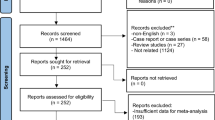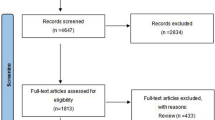Abstract
Clinical reports documenting the beneficial effects of botulinum toxin (BTX) to treat various lower urinary tract disorders of muscle spasticity (e.g. detrusor hyperreflexia, detrusor sphincter dyssynergia) have led to its expanded application in non-neurogenic conditions such as idiopathic detrusor overactivity, detrusor underactivity and benign prostatic hyperplasia (BPH). As greater numbers of investigators report their results utilizing this agent, it becomes more important that clinicians are able to synthesize and describe the findings of current clinical studies in a meaningful way. Evidence-based medicine is a platform on which investigations concerning a particular topic can be evaluated for their levels of scientific evidence, so that rational clinical recommendations can be formulated. This review article applies evidence-based practices to the use of BTX in common urologic conditions. Appreciating the benefits as well as limitations of currently available studies will hopefully drive the development of well-controlled, randomized studies of BTX, particularly in highly prevalent conditions such as idiopathic detrusor overactivity and BPH.
This is a preview of subscription content, access via your institution
Access options
Subscribe to this journal
Receive 12 print issues and online access
$209.00 per year
only $17.42 per issue
Buy this article
- Purchase on Springer Link
- Instant access to full article PDF
Prices may be subject to local taxes which are calculated during checkout

Similar content being viewed by others
References
Stewart WF et al. (2003) Prevalence and burden of overactive bladder in the Unites States. World J Urol 20: 327–336
Perfetto EM and Morris LS (1996) Agency for Health Care Policy and Research clinical practice guidelines. Ann Pharmacother 30: 117–121
Smith CP and Chancellor MB (2004) Emerging role of botulinum toxin in the management of voiding dysfunction. J Urol 171: 2128–2137
Dykstra DD et al. (1988) Effects of botulinum A toxin on detrusor-sphincter dyssynergia in spinal cord injury patients. J Urol 139: 919
Mall V et al. (2001) Treatment of neuropathic bladder using botulinum toxin A in a 1-year old child with myelomeningocele. Pediatr Nephrol 16: 1161–1162
Kuo HC (2003) Botulinum A toxin urethral injection for the treatment of lower urinary tract dysfunction. J Urol 170: 1908–1912
Dykstra DD and Sidi A (1990) Treatment of detrusor-sphincter dyssynergia with botulinum A toxin: a double blind study. Arch Phys Med Rehabil 71: 24–26
Petit H et al. (1998) Botulinum A toxin treatment for detrusor-sphincter dyssynergia in spinal cord disease. Spinal Cord 36: 91–94
Phelan MW et al. (2001) Botulinum toxin urethral sphincter injection to restore bladder emptying in men and women with voiding dysfunction. J Urol 165: 1107–1110
De Seze M et al. (2002) Botulinum A toxin and detrusor sphincter dyssynergia: A double-blind lidocaine-controlled study in 13 patients with spinal cord disease. Eur Urol 42: 56–62
Schurch B et al. (1996) Botulinum A toxin as a treatment of detrusor-sphincter dyssynergia; a prospective study in 24 spinal cord injury patients. J Urol 155: 1023–1029
McGuire EJ et al. (1981) The prognostic value of urodynamic testing in myelodysplastic patients. J Urol 126: 205–209
Kim YH et al. (1998) Bladder leak point pressure: The measure for sphincterotomy success in spinal cord injured patients with external detrusor-sphincter dyssynergia. J Urol 159: 493–496
Smith CP et al. (2002) Botulinum toxin urethral sphincter injection resolves urinary retention after pubovaginal sling operation. Int Urogynecol J Pelvic Floor Dysfunct 13: 185–186
Schurch B et al. (2000) Botulinum-A toxin for treating detrusor hyperreflexia in spinal cord injured patients: A new alternative to anticholinergic drugs? Preliminary results. J Urol 164: 692–697
Schulte-Baukloh H et al. (2003) Botulinum A-toxin detrusor injection as a novel approach in the treatment of bladder spasticity in children with neurogenic bladder. Eur Urol 44: 139–143
Riccabona M et al. (2004) Botulinum-A toxin injection into the detrusor: A safe alternative in the treatment of children with myelomeningocele with detrusor hyperreflexia. J Urol 171: 845–848
Reitz A and Schurch B (2004) Botulinum toxin type B injection for management of type A resistant neurogenic detrusor overactivity. J Urol 171: 804–805
Pistolesi D et al. (2004) Botulinum toxin type B for type A resistant bladder spasticity. J Urol 171: 802–803
Dykstra D et al. (2003) Treatment of overactive bladder with botulinum toxin type B: a pilot study. Int Urogynecol J Pelvic Floor Dysfunct 14: 424–426
Rapp DE et al. (2004) Use of botulinum-A toxin for the treatment of refractory overactive bladder symptoms: An initial experience. Urology 63: 1071–1075
Reitz A et al. (2004) European experience of 200 cases treated with Botulinum-A toxin injections into the detrusor muscle for urinary incontinence due to neurogenic detrusor overactivity. Eur Urol 45: 510–515
Giannantoni A et al. (2004) Intravesical resiniferatoxin versus botulinum-A toxin injections for neurogenic detrusor overactivity: A prospective randomized study. J Urol 172: 240–243
Smith CP et al. Botulinum toxin A has antinociceptive effects in treating interstitial cystitis. Urology, in press
Maria G, et al. (2003) Relief by botulinum toxin of voiding dysfunction due to benign prostatic hyperplasia: Results of a randomized, placebo-controlled study. Urology 62: 259–264
Gallien P et al. (1998) Treatment of detrusor sphincter dyssynergia by transperineal injection of botulinum toxin. Arch Phys Med Rehabil 79: 715–717
Author information
Authors and Affiliations
Corresponding author
Ethics declarations
Competing interests
CP Smith is a consultant and scientific inverstigator with Allergan Inc., Irvine, CA.
GT Somogyi is an investigator with Allergan Inc., Irvine, CA.
Rights and permissions
About this article
Cite this article
Smith, C., Somogyi, G. & Boone, T. Botulinum toxin in urology: evaluation using an evidence-based medicine approach. Nat Rev Urol 1, 31–37 (2004). https://doi.org/10.1038/ncpuro0034
Received:
Accepted:
Issue Date:
DOI: https://doi.org/10.1038/ncpuro0034
This article is cited by
-
Bladder outlet obstruction in women: iatrogenic, anatomic, and neurogenic
Current Urology Reports (2006)



